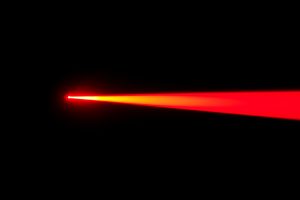Directed energy weapons – lasers – are a good example of a defense technology that has flitted around the edges of possibility for decades. The prospect of a weapon that needs no ammunition, and whose effects travel at the speed of light, remains tantalizing for militaries, despite numerous technical challenges, which have so far prevented lasers’ meaningful use.
Long a staple of science-fiction, directed energy weapons were mooted as part of a space-based missile defense system in the 1980s, before the end of the Cold War returned them to back-burner status. In the early 2000s, the U.S. Air Force revived the concept, going so far as to retrofit a Boeing 747 into an airborne laser platform called the YAL-1, designed to shoot down ballistic missiles in the launch phase. The program, beset by cost overruns, range limitations, and concerns about operational feasibility, was eventually abandoned.
Today, though, the United States, China, India, and Russia, amongst others, are all actively pursuing directed energy weapons. The U.S. has gone as far as deploying a prototype laser weapons system on a small number of its warships, though they have never been fired in combat as far as is publicly known.
The technical challenges remain significant. Laser weapons require enormous electrical power along with, in some cases, complex arrays of volatile chemicals. While they reach their target effectively instantaneously, their effect depends on heating the target to the point where it suffers structural failure, which can require the system to remain trained on what can be a small, rapidly-moving point target for an extended period. Keeping the beam focused over meaningful distances through inconsistent atmospheric conditions is challenging – after all, no commander wants to go into battle with a weapons system that doesn’t work in the rain.
But the use-case for such weapons is also changing. Lasers might still be some distance from having advantages over projectiles against warships, armored vehicles, or very rapidly-moving missiles, but their ability to fire for an extended period without drawing down a limited stock of ammunition gives them singular potential against swarms of lightweight drones, which might confound traditional defensive measures. In that context, they might well provide a crucial part of a layered defensive system, with electronic defenses, decoys, missiles, and guns all providing countermeasures against different types of threats. That might reduce the otherwise potentially transformative threat of drone swarms – in other words, it would mostly preserve the balance of military technology as it exists.
Farther out on the development curve, though, lasers might result in more profound changes in the balance of offensive and defensive capabilities. When the technical limitations around power, targeting, and focus are solved – which, admittedly, may not happen for a decade or more – lasers could make the jump from being a defensive to an offensive weapon. Such lasers could, in theory, be suitable for targeting aircraft, armored vehicles, or ships at long range, rather than defending them at short range.
That could be a major shift, indeed. For decades, advances in precision targeting, engine technology, and warhead design have put flagship systems at increasing risk and necessitated a shift from passive to active defense. Warships that were once clad in thousands of tons of armored steel are now equipped with electronic jammers, decoys, and close-in defensive systems. More recently, those systems have become compact enough to fit on armored vehicles as well. They have allowed traditional flagship systems to remain viable on the battlefield, despite increasing speculation that they are on the verge of obsolescence.
A concentrated burst of energy, however, cannot be spoofed electronically or intercepted before it reaches its target. Assuming such a weapon can deliver enough energy at range to be offensively viable, it is reasonable to assume that it could burn rapidly through armor or shielding and inflict catastrophic damage.
Absent some miraculous defensive system capable of shedding a phenomenal quantity of heat almost as quickly as it is delivered, such a weapon – in conjunction with hypersonic missiles, swarms of low-cost drones, and electromagnetic railguns – might well force the kind of fundamental rethink of procurement and force structure that futurists have been warning of for decades now.
Offensive laser weapons may well be a distant prospect. But in the world of military procurement and planning, where timescales stretch into decades, distant prospects need to be considered. For instance, the U.S. Navy’s Zumwalt-class destroyers, the last of which only just completed its builder’s trials, trace their origins back to a mid-1990s research and development program. (Incidentally, the Zumwalts were designed with surplus electrical generation capacity, in part to give them the capability to be mounted with directed-energy weapons in the future.)
It would be premature to abandon flagship systems, especially given that in the near term, lasers may serve to protect them against other categories of emerging threats. But it is also worth considering how the same technology which helps keep them viable in the near term may consign them to obsolescence later on, and how to adapt to that possibility before it arrives.

































